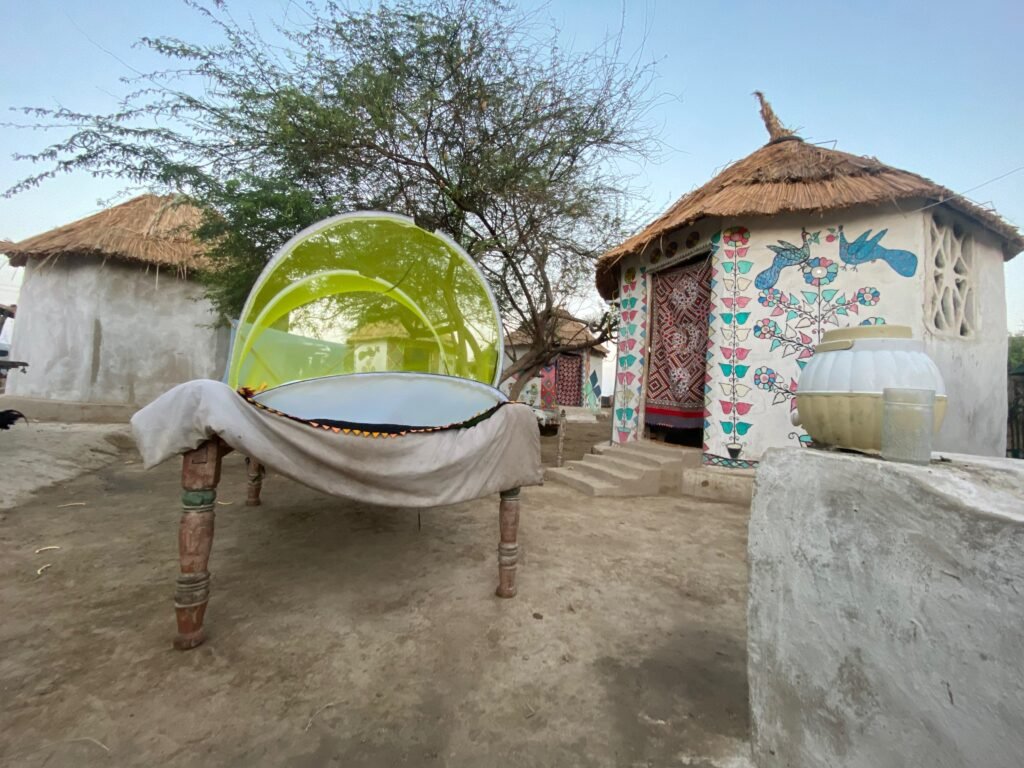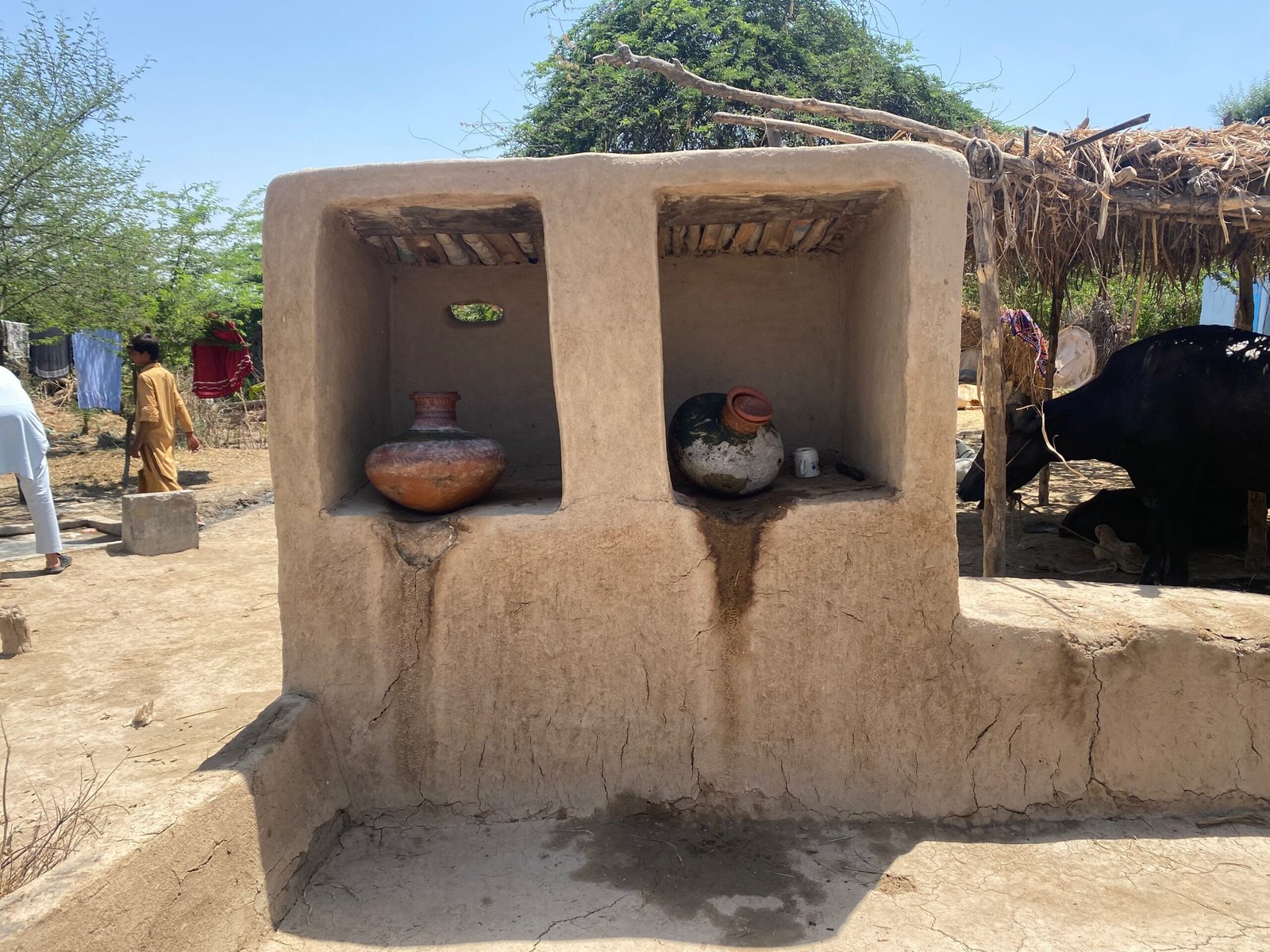Welcome to Commune
For the past few years, I’ve been exploring ways to return to a simple, meaningful life.I realized that I don’t want to spend a lot of money building a house in the city. Instead, I want to live in a simple home made from natural materials that doesn’t harm the environment.
I also came to understand that processed food and modern agriculture are polluting our rivers, destroying ecosystems, and damaging our health. I’ve been fortunate to work with organizations planting forests around the world and advising groups in Pakistan that build affordable housing and work directly with farmers.
However, I still have a long way to go. Today, I live in the city, but soon I hope to move to what I believe will be my permanent home.
While Commune is a dream project encompassing many ideas, at its core, it is a place for me to share my knowledge and plans about housing, growing food, and living simply.
نہیں نگاہ میں منزل تو جستجو ہی سہی
نہیں وصال میسر تو آرزو ہی سہی
If the end is nowhere in sight,
Let the search itself suffice.
If union is out of reach,
Let longing itself be enough.
Houses build with natural material
Over the past five years, I have gathered a wealth of information on building low-cost houses using natural materials.
Growing your own food
Growing our own food has many benefits. We eat healthier, save money, and, by practicing sustainable agriculture, help protect the planet as well.
Doing things you are passionate about
An important part of life is indulging in the things we deeply care about. Not only does it bring us peace, but it also allows us to do our best work.
Living with other like minded people
For me, family means people who believe in you, respect you, and help you grow.
Re-wilding the world & living in harmony with nature
Growing trees and living in harmony with nature are essential to our inner peace.
A cashless commune around human experiences
I have always believed that living should be free; however, COVID-19 exposed just how unreliable our economic systems can be.
Watch, Read, Listen
Building a House with Natural Materials; Using Local Materials to Build a Home
These materials are muds, wood, rock, bamboo, lime & alot of locally available natural materials which can be used to build a shelter.
Alot of people when starting to build a house consult a contractor or an architect. However, most house contractors & architects don’t work with these materials hence in most cases houses are build with material such as steel, cement, concrete, plastics which are not harmful for the environment.
First step is taking a stand & doing research for what you believe is the right thing to do. Fortunately there are options in Pakistan when it comes to building with natural materials.
Lauri Baker
Though Laurie Baker is no longer with us, this British-born humanist architect’s work will likely remain timeless, guiding anyone looking to build houses consciously and sustainably.
Laurie Baker has extensively written about using different natural materials suited to various regions to create eco-friendly homes. His techniques and housing plans are available online, and most of his books can be ordered through his foundation’s website.
A copy of his books is available at my office in Lahore and can be shared upon request.
https://www.lauriebakercentre.org/
Nader Khalili
“build your architecture from what is beneath your feets”
Nader Khalili’s approach to architecture was deeply rooted in sustainability, simplicity, and a profound respect for nature. He pioneered the “superadobe” technique, using natural materials like earthbags filled with sand and soil to create structures that are resilient, energy-efficient, and adaptable to harsh environments. Inspired by traditional Persian architecture and his desire to provide affordable housing solutions, Khalili’s designs emphasize harmony with the earth and integrate passive solar principles, offering a low-cost, eco-friendly way of building. relationship with the environment.
Today, Nader’s daughter & son run his organization which is based in United stated. I feel someone should be learning his technique and offer his unique form of architecture to Pakistan as well.
https://www.instagram.com/calearthinstitute/
Hassan Fathy
https://www.architectural-review.com/essays/reputations/hassan-fathy-1900-1989
Charles Correa
Charles Correa was an amazing architect from India who believed buildings should feel like they belong to their surroundings. He loved creating spaces that were open and airy, letting in natural light and fresh air. Correa didn’t just build big, fancy buildings—he cared about making homes for everyone, especially in crowded cities. He thought deeply about how people live, work, and gather, and designed his buildings to make life easier and more joyful. Correa often used local materials and styles, blending traditional Indian design with modern ideas. His buildings feel welcoming and reflect the spirit of India, showing how architecture can make a real difference in people’s lives.
https://charlescorreafoundation.org/portfolio/cca/

Some change makers are helping communities solve problems by teaching practical skills. Bunker Roy and Yasmeen Lari are leading examples of this approach.
A Framework for Community-Led Change; What Bunker Roy and Yasmeen Lari Got Right
Bunker Roy is an incredible person from India who had a big idea to help people in villages. He noticed that many villagers didn’t have access to things like electricity or clean water, so he started something called the Barefoot College. Instead of bringing in fancy experts, he believed that people in the villages could learn to do these things themselves. He taught grandmothers and villagers how to build solar panels, dig wells, and fix things. His Barefoot College became a place where people learned skills to help their own communities, using their hands and minds. Bunker Roy believed that real wisdom comes from experience, and he showed that anyone, even without a formal education, could make a huge difference.
Similarly, Yasmeen Lari has started a barefoot social architecture program is doing something very similar. Not only she is training the local to develop skills but she encouraging them to trade these skills among themselves saving them from paying to expensive services to outsiders.
On her youtube channel there are several training videos which can be used to train alot more people.

Pakistan architects working with natural materials.
Yasmeen Lari
Most of her work focuses on rural and low-cost housing. That said, it’s easy for anyone to take inspiration from her work and build an urban house using the same materials. However, there is a growing trend in rural communities to use non-natural materials. Yasmeen Lari’s work should be expanded to help reverse this trend.
https://www.youtube.com/@HeritageFoundationPakistan/videos
Shahid Khan
If you are looking for houses suited for urban setting then If you’re looking for houses suited to an urban setting, the work of Ar. Shahid Khan is ideal. He is one of the few architects in Pakistan who specialize in working with mud and has received international training. Compressed Stabilized Earth Bricks (CSEB) are a natural alternative to burnt bricks, and homes built with CSEB are not only eco-friendly and low-cost but also temperature-efficient.
https://www.indusearthtrust.org/management-team/
FAQs
How can you commune help us?
Depending on who you are, Commune can help in different ways. If you’re someone looking to build your future home, you can find helpful content on Commune. If you’re an NGO or social organization working to support communities, Commune offers strategic planning and execution for housing initiatives. For academic institutions, we can connect you with the right people for training programs. And if you’re an architectural firm looking to create housing plans for rural and urban populations, we can assist with design thinking, research & even execution.
Are you building houses?
Yes, we are building houses, and we are learning as we build. In many cases, our experience comes from research or from working with architects who have built them. We are passionate about sharing our knowledge and network for the collective good of humanity and the planet.
What about farming & afforestation?
We have close ties with organizations that build forests worldwide, especially in Pakistan. We also collaborate with organizations focused on sustainable agriculture and supporting smallholder farmers. We believe that a future integrating sustainable farming, rewilding the world, and living in harmony with nature is the best path forward.
Can I apply to be a part of the team of commune?
We’re inspired by aspiring architects who want to make a difference in the world. We’re looking for people passionate about growing food in new and thoughtful ways. We love collaborating with artists and craftspeople who are committed to empowering rural communities through training and education.
If you’re an educator, community leader, or someone who thinks deeply about the future—we’d truly love to hear from you.
You can easily reach Commune on WhatsApp at 0322 4130125. Just send a message sharing why you’re reaching out and what you’d like to contribute.
I’m a father of two and run a business that keeps me quite busy, but I’ll do my best to respond as soon as I can.
You can also connect with me on LinkedIn:
https://www.linkedin.com/in/usamaah/